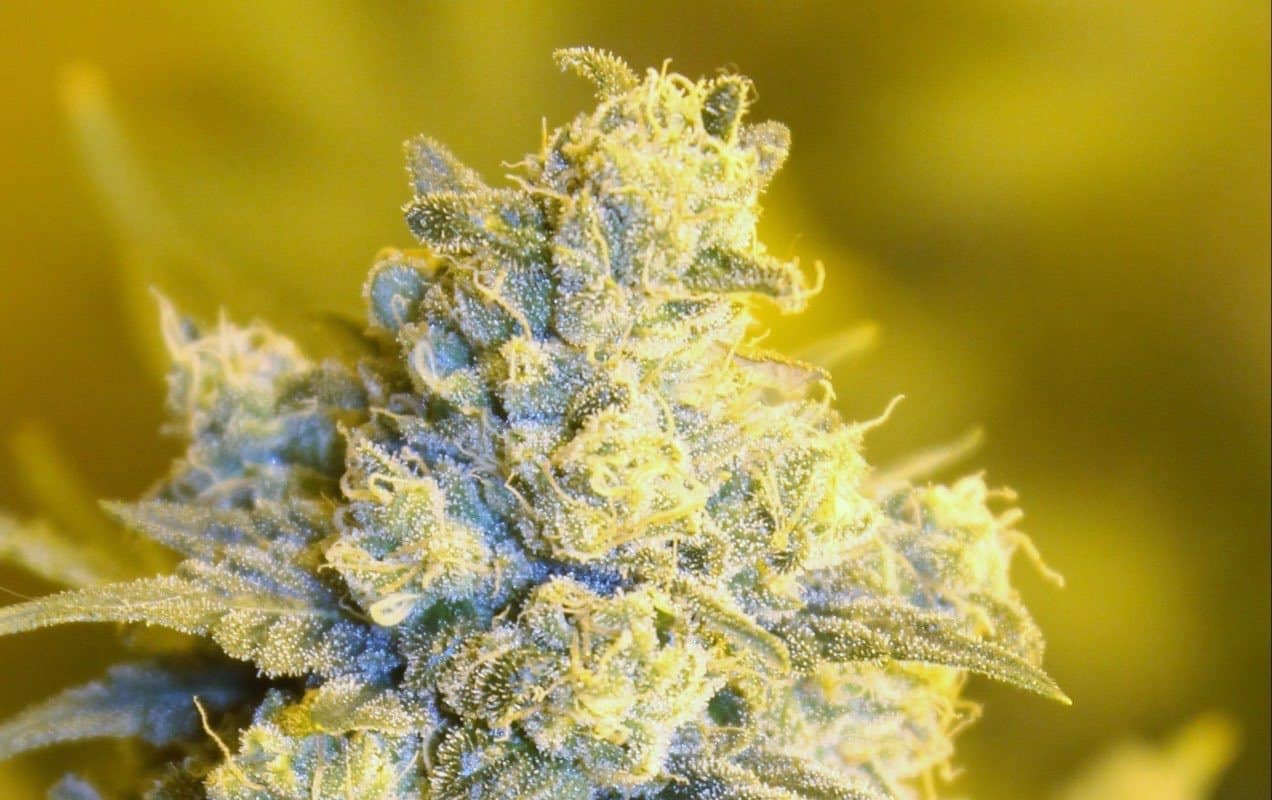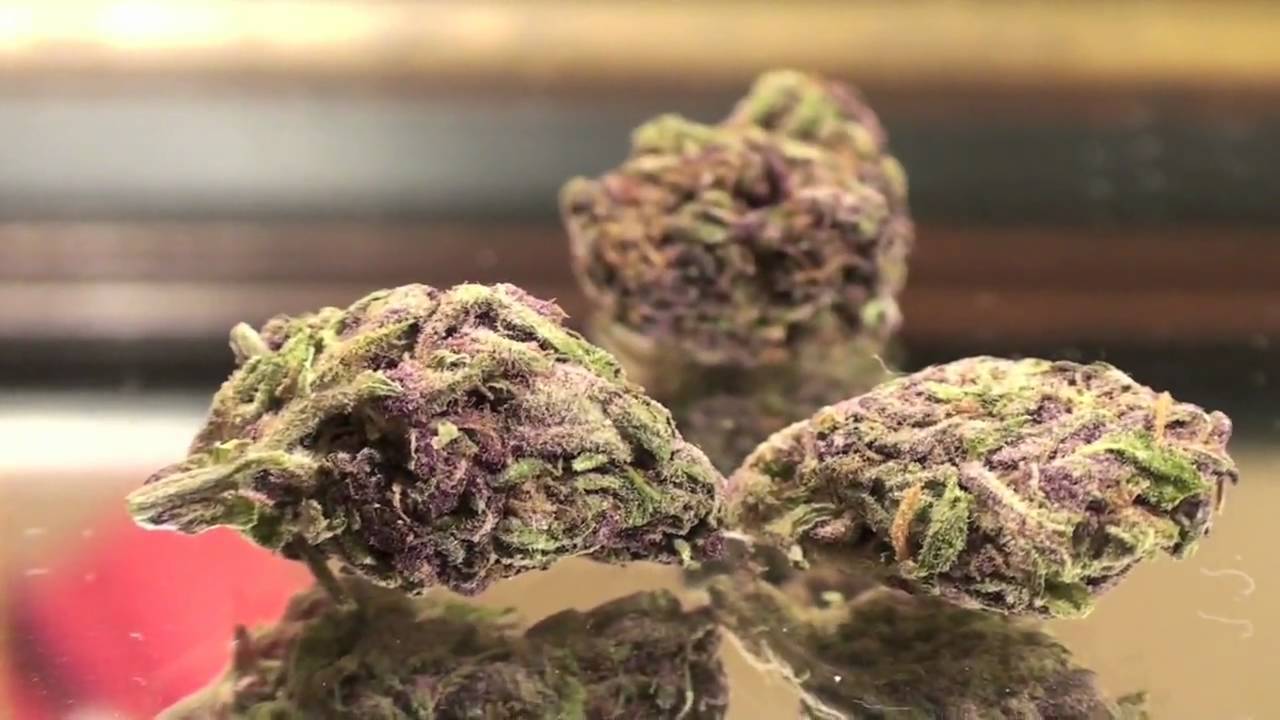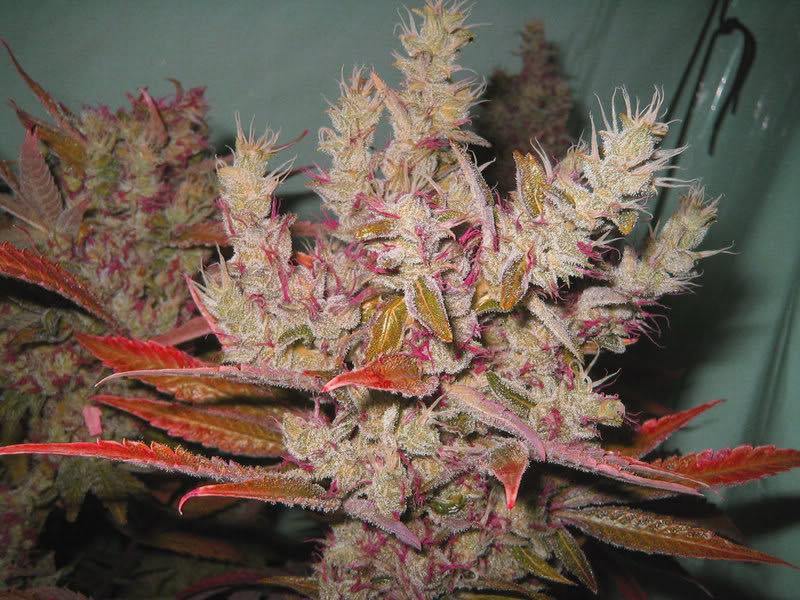Those with minimal knowledge of weed often assume that it is more or less all green. You may hear about the occasional strain with purple tints, but in general, you might think marijuana looks a bit ‘boring.’ In fact, you can grow cannabis in a variety of colors, as long as the genetics are right.
Rainbow Kush, for example, is as brightly colored as the name suggests, while strains such as Black Beauty, Panama-Sedena Red, and Black Russian are all aesthetically pleasing. Alas, you can’t take any strain and turn it into a cornucopia of color. The tendency to produce various colors is almost entirely genetic-based. However, if you purchase the seeds of a colorful strain, you can use a myriad of tricks to bring out the most vibrant colors.
Colorful Cannabis
Another thing to remember is that four different parts of your plant are capable of producing marvelous colors.
Calyxes
As you probably know, calyxes make buds. Indeed, the buds you hold in your hand are a combination of several hundred calyxes piled on top of one another, and some, or all, of them can become a color other than green. It is the calyxes that provide the most color in your buds.
All it takes is a few purple calyxes to provide a purple ‘tint’ for example. When you grind up such weed, you will see the colorful pieces throughout the sample. Obviously, the greater the number of colorful calyxes, the more vibrant the color of the bud.
Pistils
The pistils, or hairs that stick out of the buds, often turn orange, red, purple, or pink, even if the buds and leaves stay green. After the buds are dried, they retain some of the pistil coloring, and you’ll also see some of the color looking to get through beneath the buds.
Leaves
In certain strains, the buds stay green while the leaves change color. The result is a stunning plant, but as leaves tend to be trimmed after harvest, you won’t see much of the color on the buds. It is possible for the buds to remain the same while the leaves turn purple, for example. This phenomenon can happen when your plants are exposed to low nighttime temperatures. The leaves exposed to light turn purple while those in the shade don’t change color.
Trichomes
Experienced growers often use the ‘trichome’ method to determine when a crop is ready for harvest. Using a magnifying glass, they know that clear trichomes mean the plant isn’t ready. If the trichomes are milky white, the plant is at its highest THC content and prime for harvest. If the color changes to amber or yellow, you must harvest immediately, and the weed will provide a mellow high.
In rare cases, trichomes can turn pink or purple, which makes it hard to determine when to harvest. At this stage, the pistil method comes in handy.
The Genetic Imperative
The most important aspect of colorful cannabis is the strain’s genetics. No matter what you do, if a strain isn’t genetically capable of displaying stunning hues, your efforts will be in vain. The genetic ‘building blocks’ are called anthocyanins, a flavonoid family that produces red, purple, or blue pigments. You also find them in plants such as red cabbage, violets, blueberries, and eggplants.
For the record, anthocyanins are a group of over 400 molecules! As we’ll explain a little later, the pH these molecules are exposed to can make a big difference to the colors produced. Luckily, anthocyanins don’t alter the taste or smell of the weed, only the color. Chlorophyll is responsible for the green color you see in plants. A mature plant begins producing less of this pigment, and at this stage, anthocyanins begin to come through in a variety of colors.
As you can guess, some marijuana strains naturally contain greater amounts of anthocyanins than others. This is why certain strains express the same colors repeatedly. For example, Granddaddy Purple always appears to provide light lavenders and darker purples. Other strains of this ilk include Purple Urkle, Purple Kush, and Mendocino Purps.
If you want colorful buds, choose a marijuana strain with colored pistils and buds. In an ideal world, the leaves and trichomes would also be colorful. If you want maximum color after the drying and curing process, deep purple buds can maintain their colorful appearance once they have been dried and trimmed.
Five Important Factors You Can Control to Bring Out the Best Colors
Strains equipped with the right genetics produce stunning colors under specific conditions. Marijuana produces anthocyanins and flavonoids for protection. According to a study by Mansouri and Bagheri, published in Applied Biochemistry and Biotechnology in 2014, flavonoid accumulation is involved in various aspects of a plant’s growth, including protection against UV radiation, pigment production, and pathogen resistance.
Temperature
Certain cannabis strains only show their true colors when you set the night time temperature a few degrees cooler than the daytime temperature; especially as harvest time approaches. Not every strain reacts well to colder night temperatures, while strains like Panama will become colorful regardless of the temperature.
Then, there are strains like Querkle that prefer it to be warm during the day. To cover all bases, look to grow your weed in a temperature range of 75-80 degrees Fahrenheit during the day and 65-70 degrees at night. In general, marijuana with red, blue, and purple hues react well to slight drops in temperature. Be careful not to reduce it too much because your plants could go into shock.
Growth Stage
The photoperiod plays a significant role in a plant’s color. By reducing the number of hours that your crop is exposed to light, you could see a change in leaf color. This process becomes more intense during the blooming phase, in what is known as senescence, which leads to a halt in chlorophyll production. At this point, all of a plant’s resources are used to ripen the flowers, which cause leaves to die.
pH
Expert growers believe that pH is one of the most important changes you can make to bring out a marijuana strain’s color. As a rule of thumb, soil should have a pH of between 6.0 and 7.0, while hydroponically grown weed performs well in a pH range of 5.5 – 6.5.
If you want red and pink colors, keep the pH range acidic, which means on the lower end of the ranges above. If you want purple hues, keep the pH neutral. Yellow and blue colors tend to appear in alkaline, or high pH, conditions.
Lighting
While the importance of light levels varies depending on the strain, weed from the ‘purple’ camp prefers strong, direct light on the leaves and buds. Experimenting with the light spectrum in LEDs can, it is believed, work wonders for increasing the rate of anthocyanin production in your plant’s tissues.
It seems as if the molecules act as a ‘sunscreen’ for the plant, so if you increase the light and create stress, the plant will react by upping its anthocyanin production. Experienced growers know how to stress the plant just enough to produce the equivalent of a suntan for their weed! Novices could severely damage their crop.
Deficiencies
This is also on the risky end of the spectrum. Nitrogen deficiency can result in a chlorophyll decrease, which turns the leaves yellow. A phosphorus deficiency could provide a darker green color with hints of purple or red in the buds. However, we don’t recommend this tactic because it could severely damage your precious plants if extreme caution is not taken.
Sunny and Bright Yellows and Oranges:

Ideal Strains
Alien OG, Wicked OG, Grapefruit, Kandy Skunk and Lemon Kush.
Best Growing Conditions
Carotenoids are the compounds responsible for the bright and cheery yellows and oranges (and reds) you see in plants. In actual fact, humans also rely on carotenoids because they play a role in the production of Vitamin A, which we need for better growth and vision.
While all green plants synthesize these compounds, they are often covered by chlorophyll production. It is only in the latter stage of growth, when chlorophyll production is reduced, that you’ll see the colors of carotenoids.
How to Achieve These Conditions
Your best bet is to boost the pH level of your plants as they approach the last few weeks of flowering. Soil quality is of paramount importance. Add organic soil amendments, such as worm castings to your compost, but test its pH before adding it to the soil.
Vibrant and Fun Red and Pink Hues:

Ideal Strains
Pink Flower Shaman, Pink Lady Kush, Pink Lemonade, and Alaskan Thunder Bolt.
Best Growing Conditions
It isn’t easy to find strains with red/pink buds, and you’ll have to do a little research and legwork. However, there are several with red or pink leaves or hairs. The reddish hues are due to specific phenotypes that genetically predispose the strain to produce the color red during the flowering stage.
How to Achieve These Conditions
Reduce the temperature and light received by plants during the flowering stage. In the last few weeks before harvest, it may also help to cut down on the level of phosphorus. Don’t do it too soon, or else you’ll deprive your plants of a vital nutrient.
Exotic and Cerebral Black Shades:

Ideal Strains
Those with genetic lineages from Vietnamese landraces: Vietnamese Black, Black Tuna, Black Willy, Black Mamba, Black Diesel, and Black Widow.
Best Growing Conditions
It is necessary to drop nighttime temperatures down to the 50-degree mark. This is a risky proposition because you could cause severe shock. Don’t expect to see any dark shades until the middle of the flowering stage. If the temperature is higher than the required level, some of these strains will provide a gold or red hue instead of the black you may see.
How to Achieve These Conditions
You need to take a risk with temperatures and choose the right strains to end up with dark-colored weed.
Does a Strain’s Color Indicate Potency?
There is a misconception that certain colors result in stronger marijuana strains. In rare cases, a strain will develop extremely dark genetics that makes the weed seem black. It happens in Vietnamese landraces, for example. These are genetically pure strains that have not been meddled with. As a result, these strains are naturally potent and provide a major psychedelic high. However, this has nothing to do with the color.
It is imperative for you to realize that color doesn’t equal potency or even quality. You may get more antioxidants which come from anthocyanins. As a result, you may benefit from additional anti-inflammatory and painkilling properties, but then again, you could get a similar effect from eating red berries!
It is often assumed that ‘purple’ strains are stronger than others. If you had to expose your plants to colder temperatures to get that hue, the strain could produce less THC.
Final Thoughts on Colorful Cannabis
In this article, you have discovered the various aspects involved in plant color. These include genetics, temperature, nutrients, and pH levels. If you want to grow some gorgeous, colorful marijuana, follow the tips outlined above, but make sure the genetics are right first!
Also, please remember that the color of marijuana offers little more than aesthetic value. It won’t produce a greater level of THC or improve your high, but it looks nice.


![Mold Resistant Marijuana Strains [Top 5 Picks]](https://wayofleaf.com/wp-content/uploads/2020/04/wol-banner-mold-resistant-marijuana-strains-640x225.jpg)
![How to Use CO2 to Increase Your Cannabis Yields [Guide]](https://wayofleaf.com/wp-content/uploads/2018/11/mj_how-to-use-co2-to-increase-marijuana-yields-explained-1-640x225.jpg)



![Grow Bigger Cannabis Buds Outdoors and Indoors [FIND OUT HOW]](https://wayofleaf.com/wp-content/uploads/2018/09/mj_how-to-grow-bigger-cannabis-buds_1920-640x225.jpg)



![How to Clone Weed Plants [Do It the RIGHT Way!]](https://wayofleaf.com/wp-content/uploads/2018/07/mj_how-to-clone-cannabis-plants-revealed_1920-640x225.jpg)

